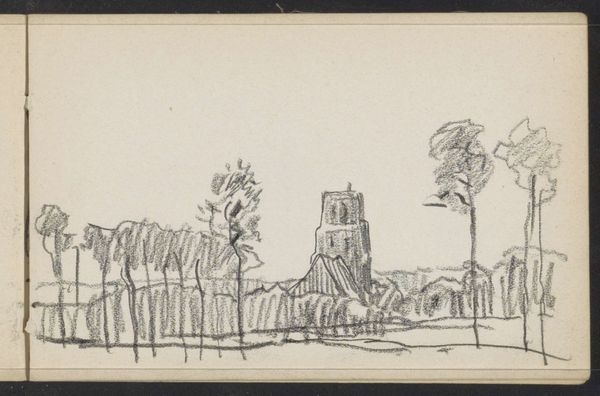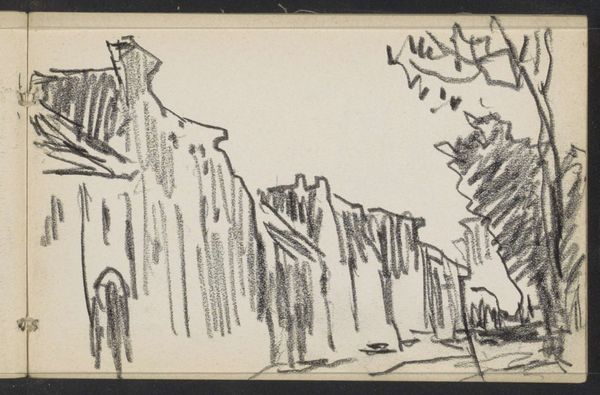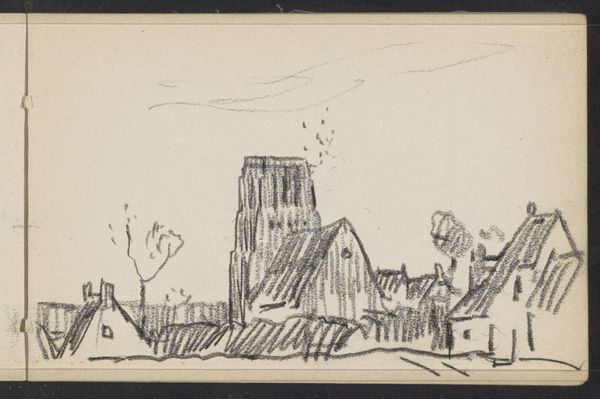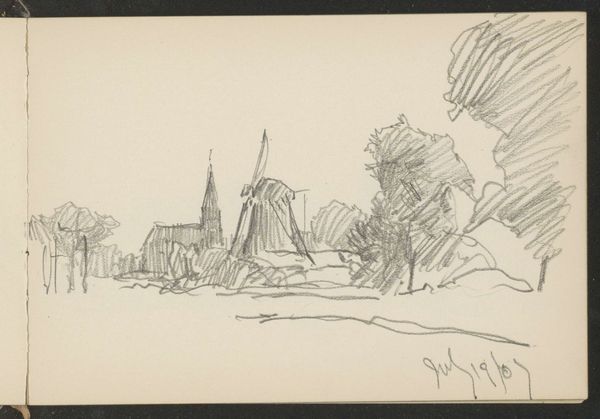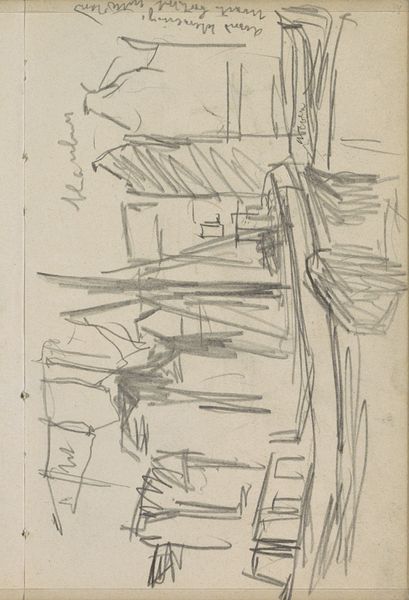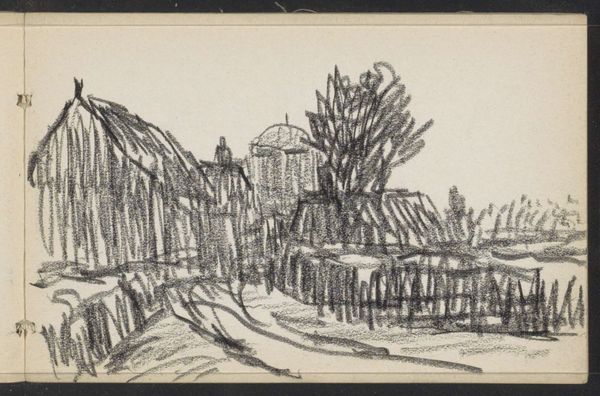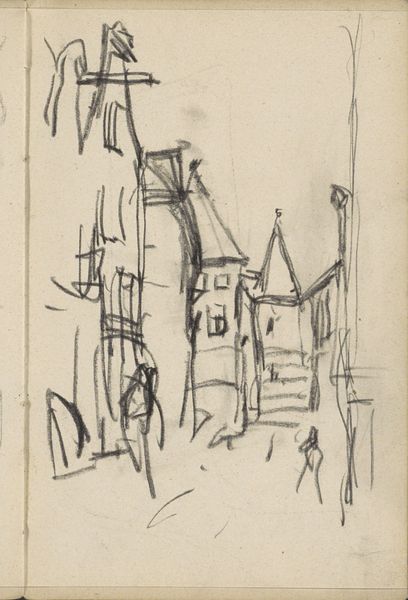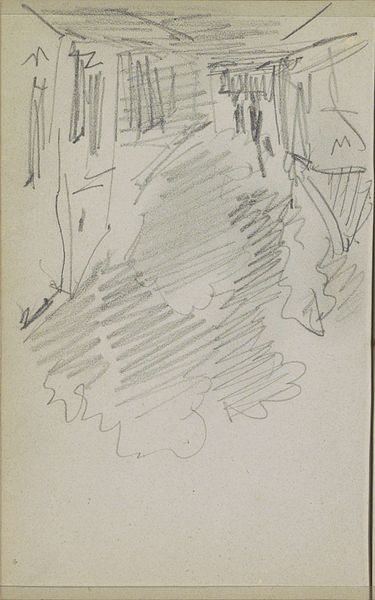
drawing, pencil
#
drawing
#
ink drawing
#
pen sketch
#
landscape
#
geometric
#
pen-ink sketch
#
pencil
#
sketchbook drawing
#
cityscape
Copyright: Rijks Museum: Open Domain
Editor: This is Alexander Shilling's "Dorpsstraat" from 1923. It appears to be a pencil and ink drawing. It feels very raw, like a quick study of a street. What do you see in this piece? Curator: For me, this sketch really emphasizes the relationship between artistic labor and representation. Shilling uses very basic materials – pencil, ink, and paper – to depict what I assume is an ordinary Dutch street scene. Look at how the rudimentary tools available constrain the final form and create geometric forms. Editor: So, it's about how Shilling's choices about media are central to how we understand the piece? Curator: Precisely. And also, consider the *act* of sketching. It’s quick, efficient. This speaks to the artist’s role as a kind of… recorder or reporter. Editor: Interesting. So, the simplicity of the materials influences the artistic expression and what it reflects of the city? Curator: Absolutely. We can even speculate about the economics of art-making at the time – did readily available, inexpensive materials democratize art production in some way? Editor: That gives me a lot to think about regarding the art's socio-economic context! Thank you! Curator: Of course! Thinking about the materiality and process always adds new layers to our understanding of any artwork.
Comments
No comments
Be the first to comment and join the conversation on the ultimate creative platform.

